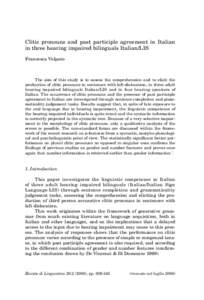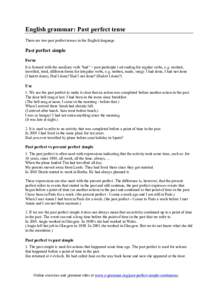 Date: 2009-05-22 08:07:47Sequence of tenses Grammatical aspect Past tense Perfect Present tense Cupid and Psyche Historical present Participle Grammar Grammatical tenses Linguistics | |  goal, Which is even more surprising since it comes completely unexpectedly. The reader knew Psyche as an able user of the rhetoric of persuasion.,... does ·not her husband give in to all her whims?41 -, but the image of goal, Which is even more surprising since it comes completely unexpectedly. The reader knew Psyche as an able user of the rhetoric of persuasion.,... does ·not her husband give in to all her whims?41 -, but the image of
Add to Reading ListSource URL: www.harmpinkster.nlDownload Document from Source Website File Size: 628,29 KBShare Document on Facebook
|
 goal, Which is even more surprising since it comes completely unexpectedly. The reader knew Psyche as an able user of the rhetoric of persuasion.,... does ·not her husband give in to all her whims?41 -, but the image of
goal, Which is even more surprising since it comes completely unexpectedly. The reader knew Psyche as an able user of the rhetoric of persuasion.,... does ·not her husband give in to all her whims?41 -, but the image of



